
Do you have a 100-gallon
There are many reptiles that are perfect for a 100-gallon
Larger reptile species like Bearded Dragons and Green Iguanas can also be kept in a 100-gallon
Tank size is critical when it comes to reptile health. A reptile that is too large for its
The bigger the
Table of Contents
Lizards That Can Live In A 100-Gallon Tank
A general rule of thumb is that your reptile tank should be at least twice as long as the lizard inside it, including the tail. This provides enough space for it to move around comfortably and naturally.
The height of the
Based on this, a 100-gallon reptile
For those who don’t want to have to upgrade to bigger tanks later, here are a few suggestions for lizards that grow up to 18 inches and can be kept in a 100-gallon
1. Uromastyx
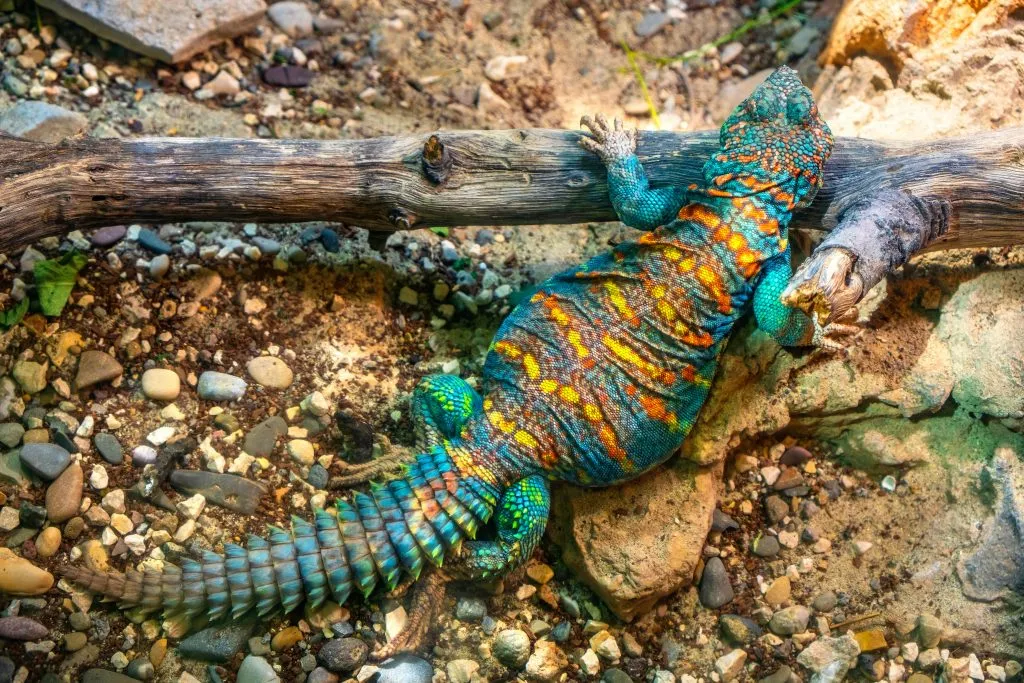
Uromastyx look a bit like bearded dragons without beards and most of their spikes. They come from deserts in Africa, the Middle East, Asia, and India. Two of the most common pet species are the Mali and the Saharan uromastyx.
The adult uromastyx is generally 18 inches or less, except for the Egyptian uromastyx which can grow to over 30 inches in length. The adult Egyptian should not be kept in a 100-gallon
Do you want to get an uromastyx? We have created an uromastyx care guide to help you. Read it here!
2. Mountain Horned Dragon (Acanthosaura capra)
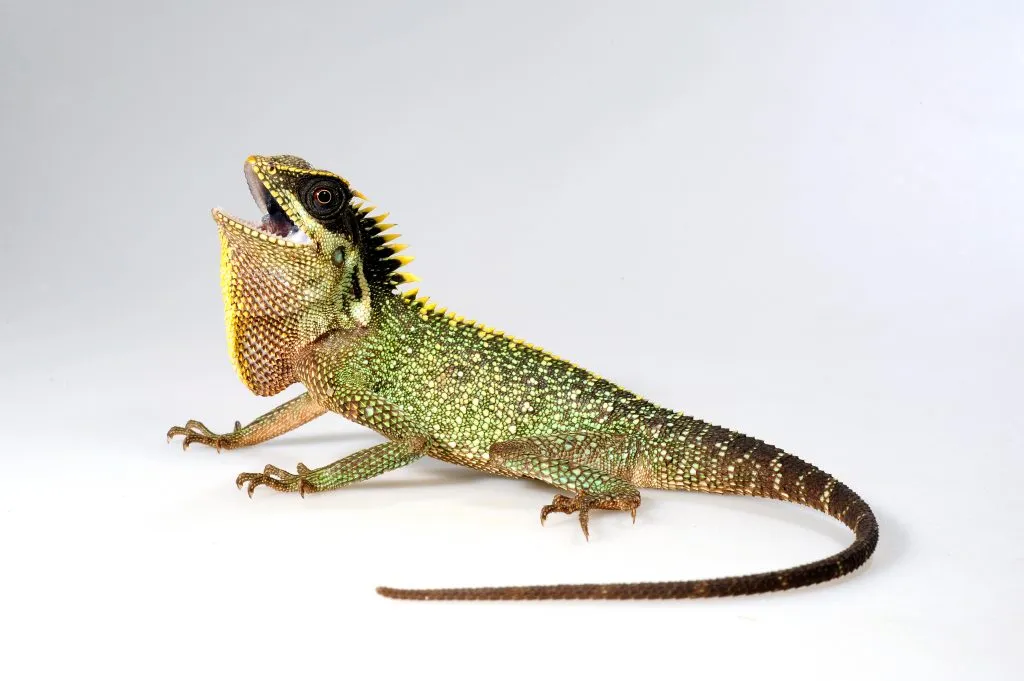
Mountain horned dragons are arboreal. Their mature size is about 10-12 inches long, so they will be very comfortable in a 100-gallon
In the wild, they spend their time in rainforest canopies and near running water. When choosing an enclosure for these animals, be sure to consider the height and whether it can maintain the temperature and humidity that this species needs.
3. Panther Chameleon (Furcifer Pardalis)

Panther chameleons are native to the northern and coastal areas of Madagascar where they live in trees and bushes, mostly in the coastal lowlands where it is warm and humid.
Like the mountain horned dragon, their habitat needs to accommodate their climbing behavior and temperature and humidity requirements.
Males are significantly larger than females, with mature males getting 14-21 inches in length, and females only 9-13 inches. Larger males may eventually need a bigger
Interested in getting a panther chameleon? Read our panther chameleon care guide to learn everything you need to know about these awesome reptiles!
4. Female Veiled Chameleon (Chamaeleo calyptratus)
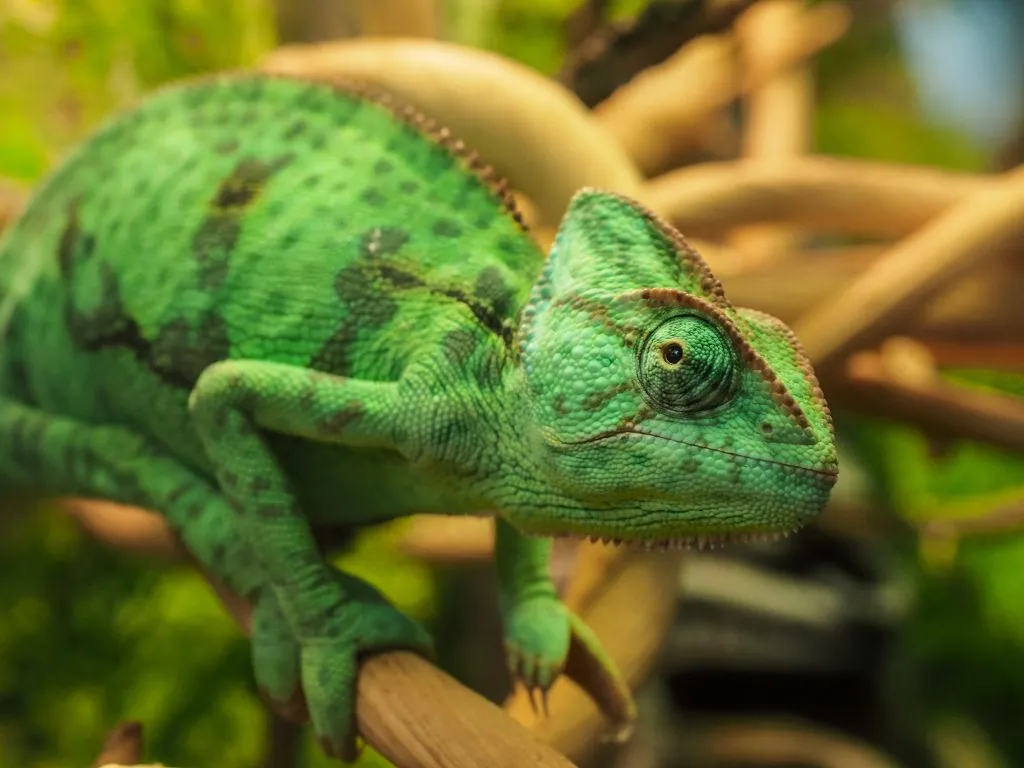
The veiled chameleon is native to the southwestern Arabian Peninsula, where climates are semi-arid and tropical. Like other types of chameleons, it is arboreal and needs to be housed in a taller
Tip: If you are thinking about getting a veiled chameleon, read our veiled chameleon care guide here!
Male veiled chameleons grow up to 24 inches and will usually grow too large to be permanently housed in a 100-gallon

Snakes That Can Live In A 100-Gallon Tank
The minimum length of a
A 100-gallon
5. Green Tree Python (Morelia viridis)
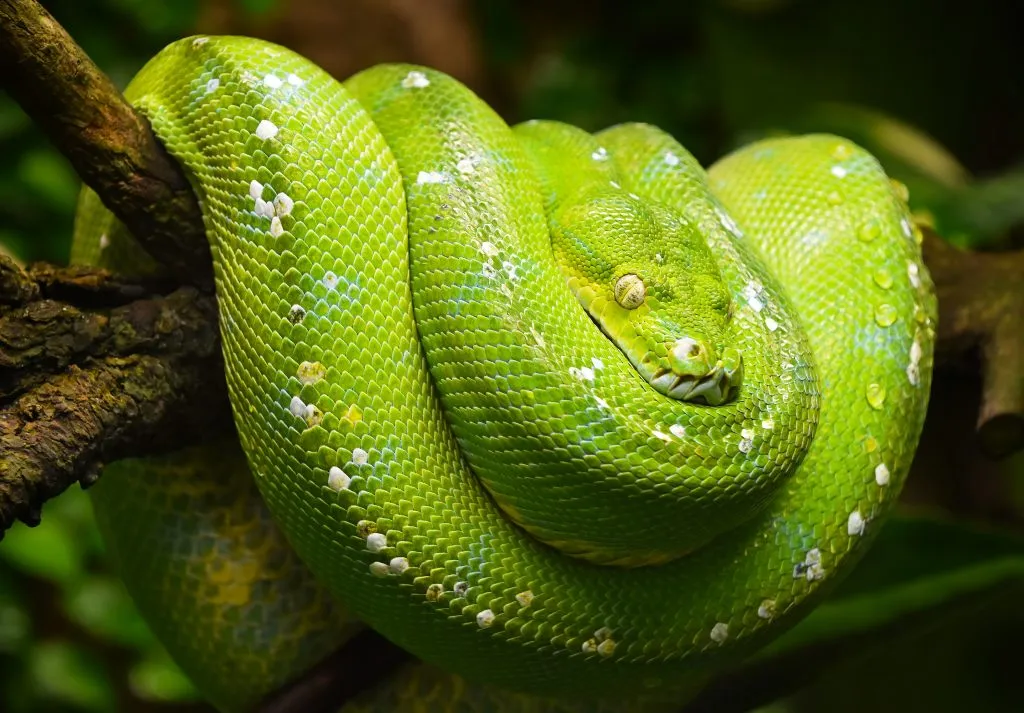
They thrive in tropical rainforests that are teeming with vegetation and high humidity levels. The majority of their time is spent in trees.
Green tree pythons can grow to be approximately 5-6 feet long. They need to be housed in a tall
6. Gopher Snake (Pituophis catenifer)
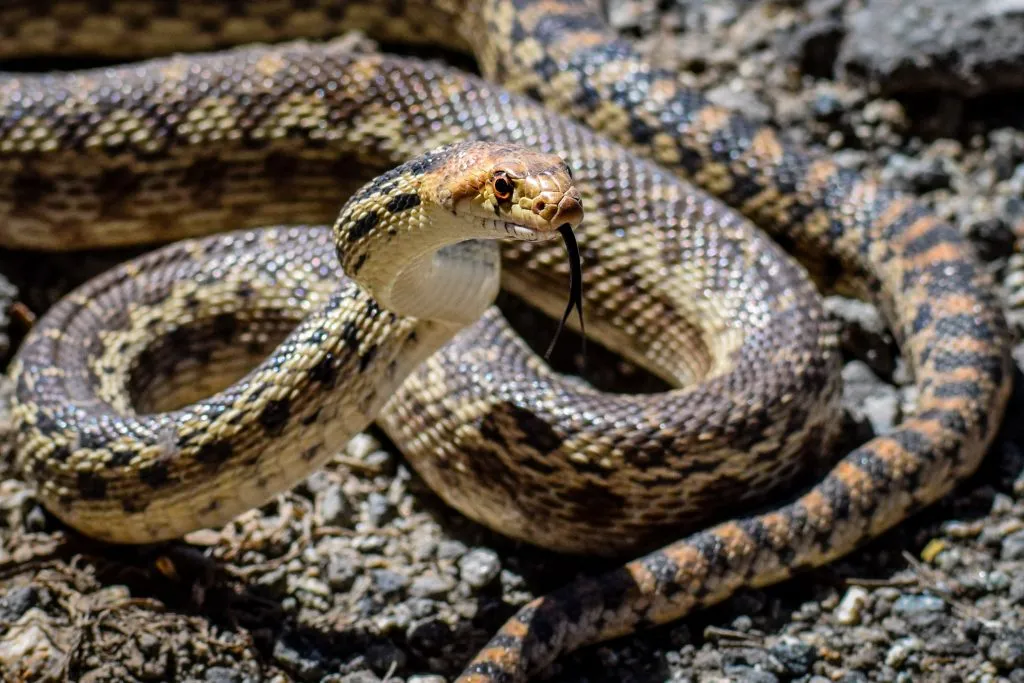
The gopher snake is found across North America in all different types of habitats. This species occurs in many different habitats, including prairies, forests, and deserts.
These snakes can grow to be 8 feet long. However, most mature gopher snakes are less than 6 feet long and are quite comfortable in a 100-gallon
7. Ball Python (Python regius)
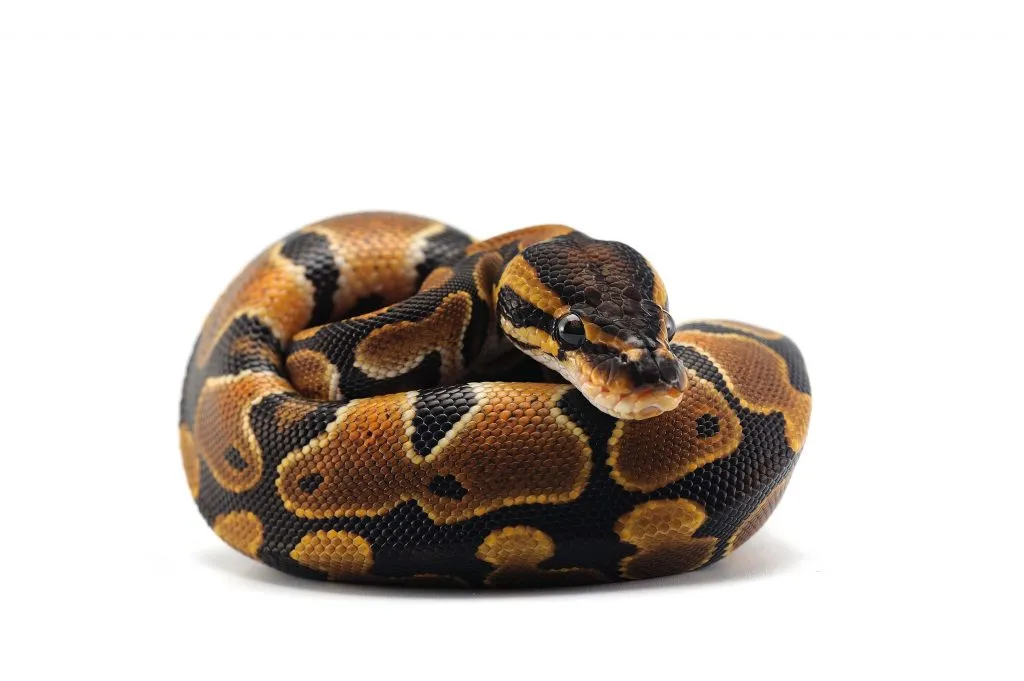
Ball pythons are indigenous to West and Central Africa. In the wild, they typically inhabit savannas and grasslands.
These snakes are named for the way they behave when they feel threatened. Instead of slithering away or striking out, they curl into a tight ball to appear smaller.
Ball pythons are one of the smallest of the python species. They can grow up to 5 feet, but they more commonly grow to 2-4 feet long.
Wanna learn more about ball pythons? Read our ball python care guide here!
8. Carpet Pythons (Morelia spilota cheynei)
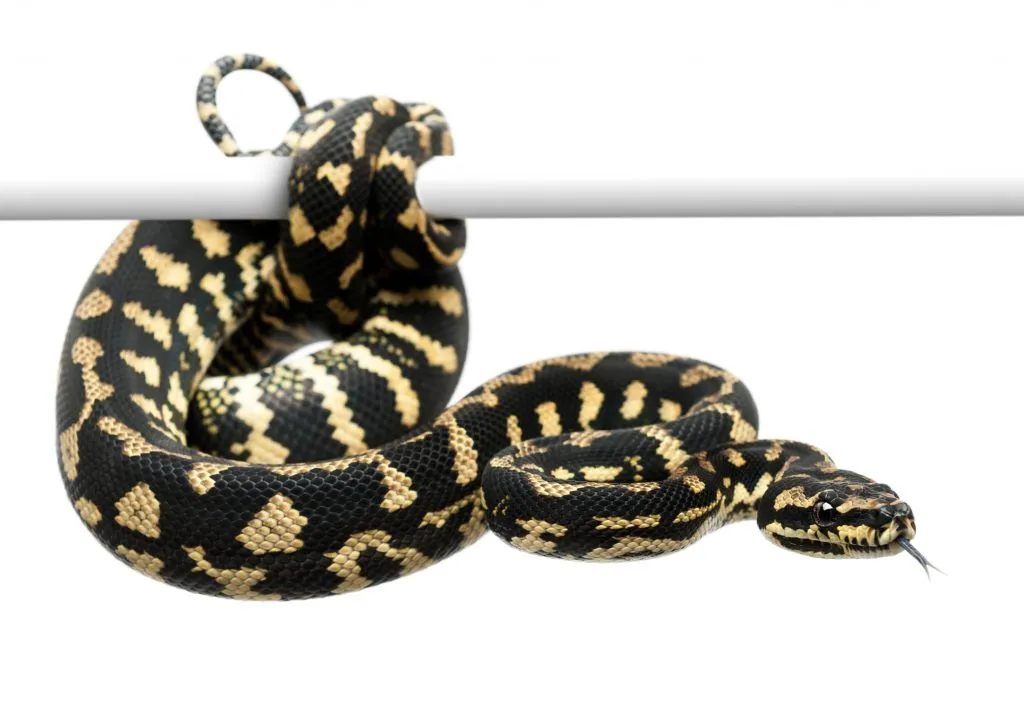
Carpet pythons are medium-sized snakes characterized by their vibrant markings.
Adults are between 6 and 12 feet long, and the average is 8 feet. Smaller adults can live comfortably in a 100-gallon
Turtles That Can Live In A 100-Gallon Tank
A 100-gallon
9. Yellow-Bellied Slider (Trachemys scripta scripta)
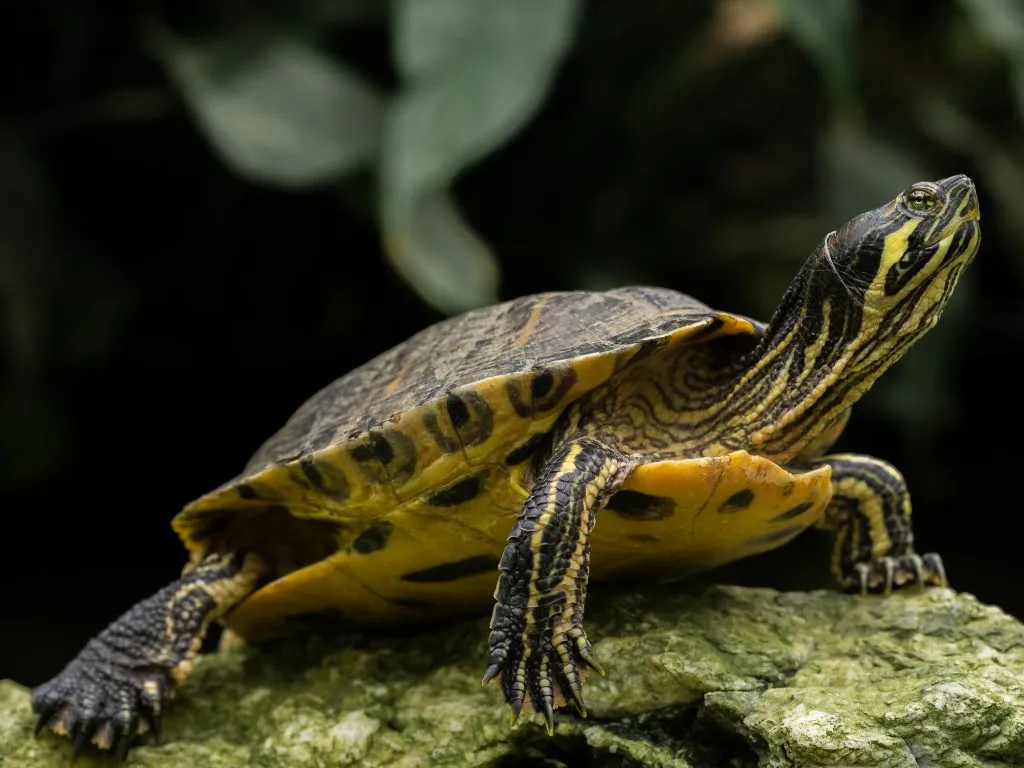
Yellow-bellied sliders are basking turtles that are found in abundance in the southeast United States and are popular as pets. They are semi-aquatic, spending much of their time floating in the water and coming out on land to bask.
At maturity, the shells of these turtles reach 5-12 inches in length. Juveniles eat primarily aquatic insects, while adults mainly eat vegetation.
10. Red-Eared Slider (Trachemys scripta elegans)

Red-eared sliders are very much the same as yellow-bellied sliders in size, behavior and needs. They are native to the Mississippi river but have been seen in many other states and some parts of Canada.
Red-eared sliders kept as pets are often released into the wild, which explains their presence in locations other than the Mississippi. Many released sliders do very well in the wild, and they are considered an invasive species in some areas.
11. African Sideneck Turtle (Pelomedusa subrufa)
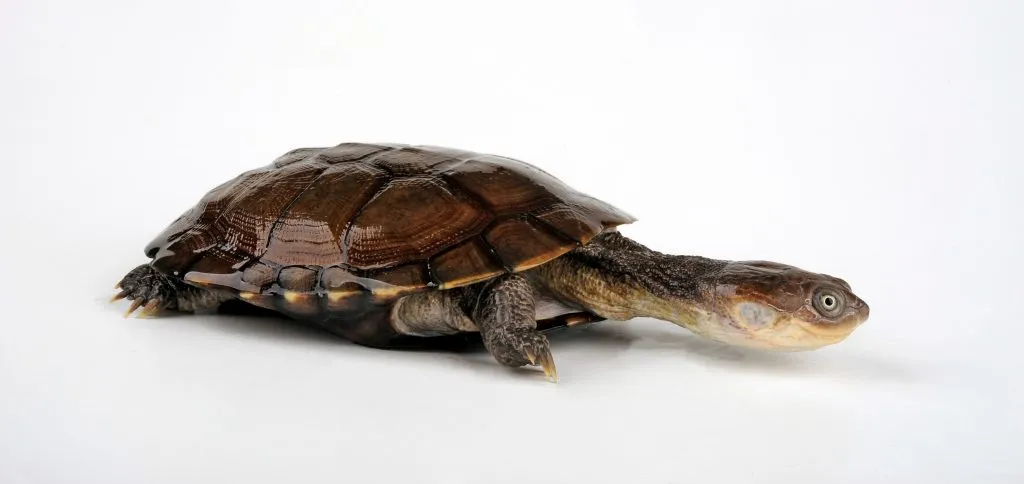
Also known as the African mud turtle, the African sideneck turtle gets its name from its lack of ability to tuck its head all the way into its shell. Instead, it draws its head sideways under the upper edge of the shell.
The average adult African sideneck’s size falls between 7 to 12 inches, with females averaging a greater size than males. They are known for their longevity, with some reports suggesting they can live more than 50 years in captivity.
12. Western Painted Turtle (Chrysemys picta bellii)
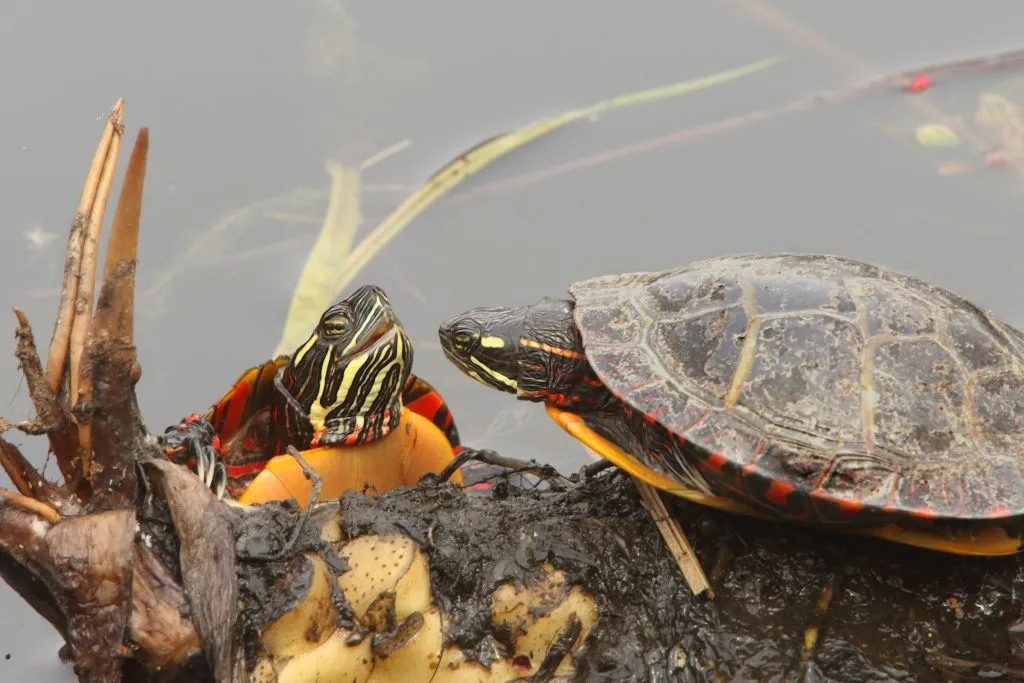
The painted turtle is a freshwater species prevalent in North America, typically residing in ponds, slow-moving rivers and creeks, and murky bogs. They need a habitat with fresh water, a soft bottom, basking sites, and aquatic plants.
Mature female turtles reach 12 inches in shell length. Males are smaller with an average shell length of 10 inches.
Larger Reptiles That Can Live In A 100-Gallon Tank As Juveniles
If you’re looking to buy a larger reptile but only have a 100-gallon
Here are a few of the options available to you.
Bearded Dragon (Pogona vitticeps)

Beardies can easily be kept in a 100-gallon
If you want to get a bearded dragon, we highly recommend reading our bearded dragon care guide here!
Green Basilisk (Basiliscus plumifrons)
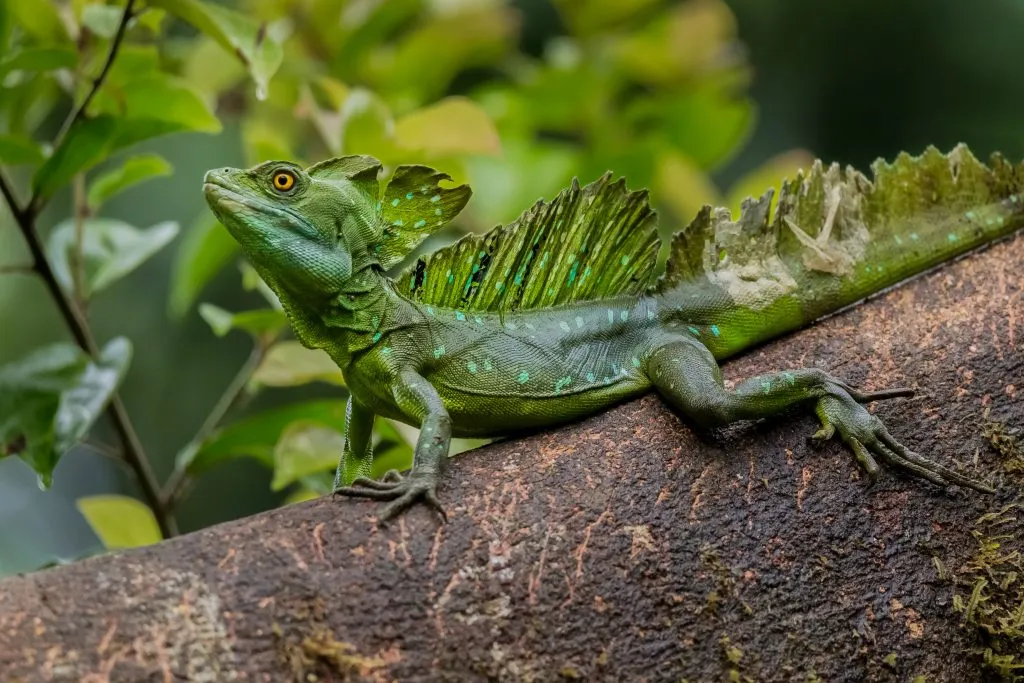
Green Basilisks are 24-36 inches long when mature. They can be kept in a 100-gallon
Savannah Monitor (Varanus exanthematicus)

Savannah monitors reach 30-48 inches in length. They can mature as early as 2 years, though many grow slower and mature in 3 to 4 years.
Read our savannah monitor care guide if you would like to get a savannah monitor or already have one!
Green Iguana (Iguana iguana)

Green Iguanas can be as long as 6 feet from nose to tail, with most of this length being tail. At 6 months they will be 20-27 inches long, meaning a 100-gallon
Freckled Monitor (Varanus tristis orientalis)

Freckled monitors grow up 24 inches long, with half of that being tail. At maturity, they are too big to be permanently housed in a 100-gallon
Green (Emerald) Tree Monitor (Varanus prasinus)
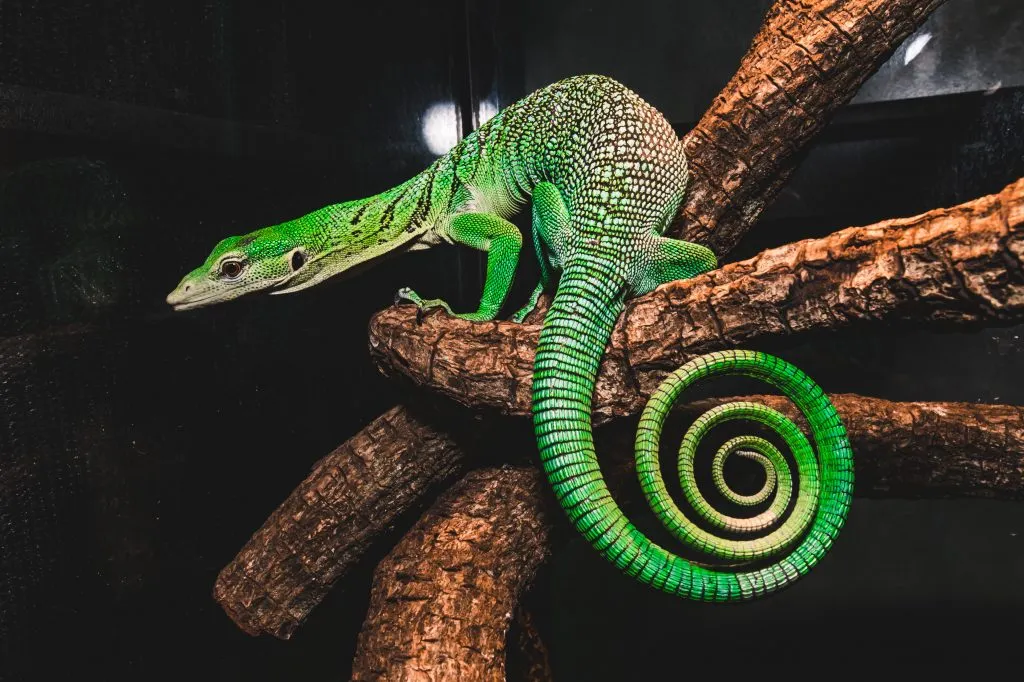
Mature green tree monitors can be up to 36 inches long, with females being slightly smaller. These reptiles grow very rapidly and are likely to outgrow a 100-gallon
Snakes
Many snakes that are larger when mature can be comfortably housed in a 100-gallon
This includes many of the boa and python species. Check our other articles below to see what snakes we recommend.
Smaller Reptiles Can Live In A 100-Gallon Tank
In this article, we’ve talked about larger reptiles that can live in 100-gallon tanks their whole lives as well as those that can live in these tanks as juveniles.
However, let’s not forget about all of the smaller reptiles that would be very happy with such spacious accommodations!
Have a look at these articles to learn more about smaller reptiles that can also be kept in your 100-gallon
- 5 Reptiles That Are Great For A 5-Gallon Tank
- 9 Reptiles That Are Fantastic For A 10-Gallon Tank
- 9 Reptiles That Can Live In A 20-Gallon Tank Forever
- 14 Reptiles For 30-Gallon Tanks
- 6 Reptiles That Can Live In A 40-Gallon Tank Forever
- 9 Reptiles That Can Live In A 55-Gallon Tank
- 8 Fantastic Reptiles For A 75-Gallon Tank
- If you would like to go bigger: Reptiles for 120-gallon tanks
In Conclusion
A 100-gallon
Be sure to do your research before bringing any new pet home, so you know what kind of care they will need and how big they will get as they mature.
- Enchi Ball Python: A Unique and Stunning Morph of Python regius - March 27, 2025
- Emerald Tree Monitor: The Enigmatic Green Guardian of the Rainforest - March 26, 2025
- The Egyptian Cobra (Naja haje): A Fascinating Serpent - March 25, 2025
